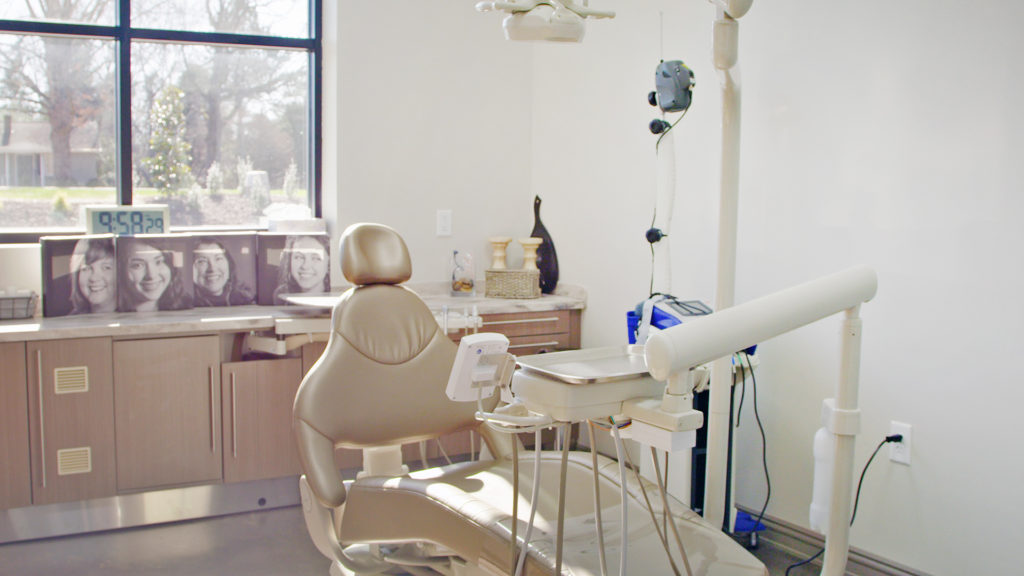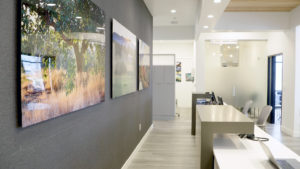Nothing stays the same, and dental offices are no exception. From updating the décor to expanding treatment spaces and improving workflow and ergonomics, there are a number of reasons why a practice might consider a remodel or renovation.
Establishing goals
Exactly how you go about making those changes depends on what you aim to accomplish, of course. Take, for instance, the question of patient perception. It's an important part of a practice's success, but one that can be easy for providers to overlook. For a dentist or hygienist who is in the office every day, a stained ceiling tile or chipped piece of laminate can easily fade into the background. For patients, though, these small details can loom large in how they experience the space.
That's especially true as the COVID-19 pandemic continues, with patients more than ever demanding clean and efficient spaces, particularly when it comes to health care.
Related but distinct from patient perception is patient experience. When a patient calls your office, are they able to get an appointment in a reasonable time frame? If they have an emergency, can they be seen quickly? Are they able to schedule specialty procedures like endodontics or airway treatments or even surgery? If not, is that because you don't have enough treatment rooms to schedule patients for timely appointments and perform the range of procedures you would like to? If it's square footage that is holding you back, an expansion or reworking of your existing space could be in order.
Another important consideration is how well the office serves your team's needs. Is it efficient and ergonomic for your hygienists, your assistants, your office manager and your front desk staff? Are treatment rooms large enough for them to work comfortably and effectively? Is the sterilization area laid out to allow for quick and efficient cleaning of instruments? Is there a break room or lockers where staff can keep their things? More generally, are you and your team happy where you are currently working? If not, a move or renovation or even just a small remodel can help reinvigorate a workplace.
Should you stay or should you go?
Once you've decided a change is in order, it's time for the next decision — should you stay or should you go? If you own the building or condo where your practice is located, that probably means you're staying put. In that case, a remodel or expansion, perhaps even an expansion to a second satellite location, is the way forward.
If you're leasing, on the other hand, changing locations might make sense. The first question, in that case, should be: when does your lease end? Leaving before it's up typically isn't an option. If your lease is coming to an end, it's time to start thinking about what you want in a new space and what your options are in terms of what's available in your price range. Buying instead of entering a new lease might also make sense, particularly at the current low interest rates. In fact, it's possible you could refinance your practice debt and borrow additional money for a new space and end up with lower monthly payments.
Even without moving, it's likely that you can substantially rework your space. Many office designs, and older office designs in particular, are inefficient, which means there is often room for improvement. Reworking an old office can involve some compromises, though. For instance, in exchange for an extra treatment room, you might lose a consult room. Depending on your building and your landlord, it might also be possible to expand into adjacent space that isn't currently being used. In the current climate, landlords are keen to keep their tenants in place, so they will likely be willing to work with you to facilitate a remodel or expansion, perhaps even going so far as to pay for some of your construction costs through a tenant improvement allowance. Hiring a real estate professional with expertise in health care spaces can help you get the best deal when negotiating with either your current or new landlord.
Costs versus benefits
Moving or remodeling your space will be a stressful process — there's no way around that. It will also cost you money. The decision ultimately comes down to whether the cost is worth it. Of course, doing nothing can also have its costs — opportunity costs. If you don't have enough room to schedule your patients in a timely fashion or see emergency cases, what is that costing you? When you're weighing the pros and cons of making changes to your office, a service like Henry Schein's Integrated Design Studio (IDS) can help you assess your needs and come to a decision. And if you do choose to move ahead with a project, the experts from IDS can help make sure your practice gets the most out of the effort.
Once you've decided to change things up, there are a number of areas you might consider focusing on, depending on your practice's particular needs.
Updating your look
If you're aiming to refresh the look of your office, updating your flooring and wall finishes can make a major impact. New paint, artwork and furniture can also give your space a facelift. One thing to keep in mind is to select finishes and a color palette that works with your existing equipment — unless, of course, you're planning to update that, too. Also key is using commercial-grade materials that can handle the foot traffic and wear and tear the office typically sees.
In terms of specific products and styles, luxury vinyl tile and carpet tiles are both popular flooring options that make it easy to replace soiled or damaged sections. Wall treatments, including acoustical tiles, wood flat walls and wainscotting are also popular at the moment. If you're changing up your furniture, consider providing a variety of different seating types and seating areas within your office to make it feel less like a clinical space. The aim should be to create an office that feels both well-maintained and organized, as well as warm and inviting — reducing the anxiety many feel when going to the dentist.
Improving your layout
Another goal may be expanding or changing an office's floor plan to improve the flow of foot traffic or add more clinical space. In that case, it's crucial to examine how those changes will make the work experience more pleasant or more efficient. For instance, if you are adding new operatories, how do those new spaces interact with the existing sterilization room? If the existing sterilization room isn't easily accessible to the new operatories, can it be moved or can another sterilization room be added to serve them? To be successful, it's crucial at the beginning of the process to carefully evaluate what space you have and whether it is enough to meet your goals for your redesign.
Also important is making sure that your space complies with the standards spelled out by the Americans with Disabilities Act (ADA), which prohibits any discrimination against those with physical or mental impairments that might limit their activity. In practice, that means making sure rooms and hallways meet the minimum clearance requirements and that bathrooms and office desks are accessible to individuals in wheelchairs. Henry Schein’s IDS also implements what is known as universal design, which goes beyond the ADA requirements and strives to create a space that is comfortable for all types of individuals, including those with mobile or dexterity limitations, or developmental or intellectual limitations, as well as their parents or caregivers.
Putting your plan into action
Once you have plans in place, it's time to consider the details of getting the job done, which means getting your finances in order. If you aren't covering the cost in cash, you'll need a loan. The good news is, money is cheap at the moment and lenders consider health care a great investment. Getting pre-approved is always a good idea, as it will let you know what you can afford before you get started.
Permitting might also be required, especially for larger-scale projects involving moving walls, plumbing or electrical. In that case, you'll need a local architect on your team to make sure your plan meets local and state codes and guidelines, including the national ADA codes.
And, finally, you'll need a contractor to actually do the work. It's important to have someone with experience working on dental offices, who understands the details of this kind of work.
Conclusion
An office refresh or renovation can be a substantial undertaking, no doubt. Done right, though, it can pay off in better patient perception of your practice and a better patient experience, as well as a happier, more efficient team. A successful project begins with thoughtful, thorough planning, followed by solid execution — careful consideration of details ranging from your practice's goals, to lining up financing, to selecting paint colors and choosing a contractor. It's a complicated process, but experts like those at IDS can help with every step along the way.
Are you thinking about a refresh for your office? Visit www.henryscheindigital.com/dentalpracticedesign to learn how Henry Schein can help you achieve your vision.


